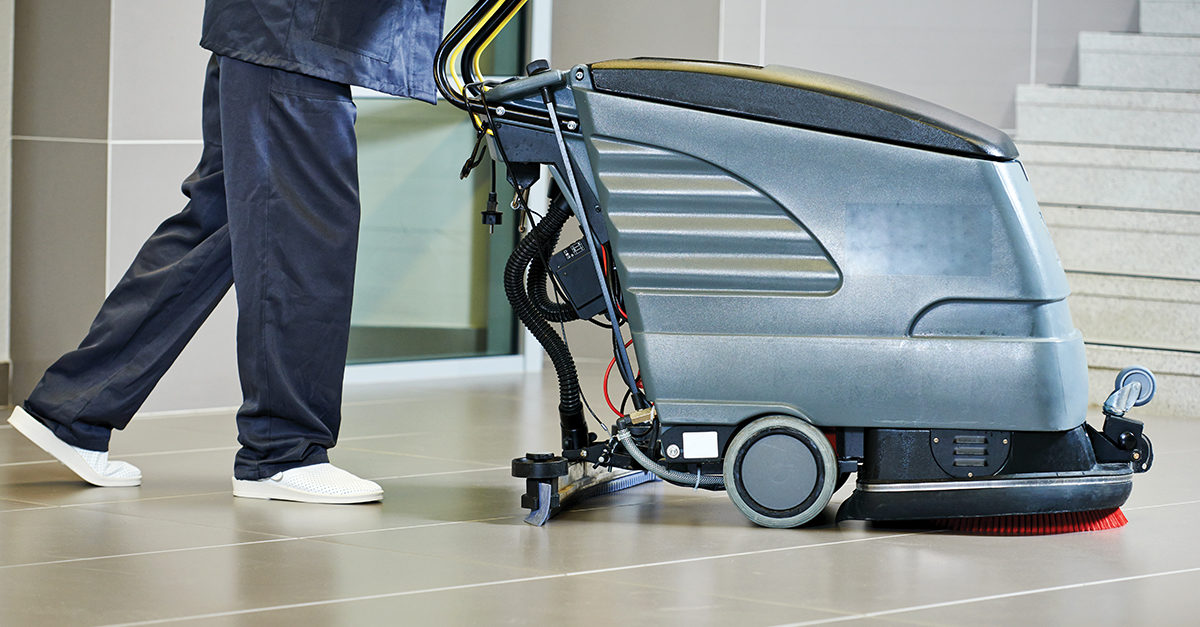Hard floor care is a major cost in most facilities, and it plays a key role in overall building appearance, health, and safety. Floor care costs normally range from as little as US$0.60 per square foot to more than $2 per square foot, per year, and represent 5 to 20 percent of the cleaning budget in most facilities. Reducing up to 50 percent or more in floor care cost in any size and type of a facility is a realistic, achievable goal when employing new processes and technology.
Making Cost Reduction Work in Your Facility
Reducing costs is not a one-size-fits-all or one-step process. True savings can be achieved when all aspects of a floor care program are evaluated, and changes are made to customize the needs of the facility and its occupants in a way that improves processes—without a loss of service quality. Change and improvement that reduces costs takes time; part of the process involves tracking, monitoring, and adjusting processes and frequencies based on testing and factual information.
Put together a “can-do minded” team, do the needed research, develop a realistic plan and timeline, and you may be pleasantly surprised with how much can be accomplished over a fairly short period of time. It won’t be easy or fast, but floor care cost reduction is definitely doable without a loss of quality.
Actual costs in each facility will vary depending on a number of factors, the most common of which are:
- Type and condition of existing floors
- Type and amount of soil present
- Traffic level and building use
- Customer and management expectations
- Procedures and frequencies of service
- Skill of the cleaning staff
- Chemicals and equipment used.
How to Do It
To reduce floor care costs, you must change one or more of the above factors. We have control over some of these factors, but not all. Focus on those you can actually manage. One of the greatest challenges we face in reducing costs relates to making changes that don’t have a negative impact on the level or quality of the service provided, specifically the appearance of the floors and the building. Don’t overlook the impact on health and safety; when it comes to floor care, most managers focus on the visual appearance, or cleanliness and shine, of floors.
Change Required
In most cases, cutting costs isn’t about working harder or faster; it’s about changing the way you do the work.
One of the challenges in reducing cost is overcoming resistance to change, which is a natural human response when people face the unknown. You should expect it, plan for it, and deal with it. The best way to deal with resistance to change is to educate those involved as to what is taking place, when it will happen, why it is being done, and how it will impact their jobs. This doesn’t mean everyone will be happy, go along with, or support what is being done, but educating and involving those whom the changes will impact is the best option you have to ensure a smooth transition.
Focus on Cost Reduction
When it comes to reducing floor care costs, management must set goals and lead the way. This generally starts with a detailed analysis of what is currently being done, along with a review of costs and all other impacting factors. Beyond this, conducting an inventory of hard floor surfaces, with square footages and types of flooring in each area, will provide a better understanding of what needs to be and what actually is being done. Digging deeper to review existing schedules and costs will give you an even better view of reality, along with where you can and should make changes.
Start With the Basics
When looking at your floor care program, break up the work into the following four categories:
- Initial tasks
- Daily or routine tasks
- Periodic tasks
- Restorative tasks.
A Closer Look
Processes. How is the work conducted currently? Do written procedures for tasks such as mopping, scrubbing, burnishing, stripping, and refinishing exist? Are the procedures used in training and daily operations? Are employees, supervisors, and managers aware of, following, and referring to the written procedures when questions or problems arise? It is important that everyone—including the customer—is on the same page regarding how the work will be done and what the final result should look like.
Quality Assurance Guidelines. Quality assurance guidelines should be in writing and specify—in easy-to-understand language—what the expected end result of performing each task should look, smell, and feel like. In some cases, a quantitative measurement (e.g., gloss meter, slip meter, film thickness, etc.) can be used to validate that the desired end result is achieved.
Frequencies and Assignment Schedules. These should be flexible, in writing, and based on the needs of each building and micro area serviced. Setting service schedules and basing cost on flooring types alone is not a cost-effective approach, as area needs vary greatly. In developing cost-effective programs, look for ways to eliminate or reduce the frequency of costly tasks such as burnishing, stripping, and refinishing.
A frequency and assignment schedule should detail when each task should be completed and who is responsible for verifying that the work has been completed.
Blueprints. Actual blueprints or fire evacuation maps of each floor are helpful in identifying work areas and square footages. These documents can be color-coded as to floor type, processes, and frequencies.
Surface Inventory. An inventory of existing floor care surfaces can illustrate what tasks should be performed in a given environment. It’s also a good idea to research and collect each manufacturers’ installation and maintenance specifications. Having this information on floor surfaces helps prevent and identify problem causes. Most cleaning and floor performance problems are related to improper maintenance and/or installation.
New Types of Flooring. Many of the new surfaces entering the market today are marketed as low-maintenance products—luxury vinyl tile (LVT), laminates, laminated vinyl, rubber, and vinyl sheet goods. In many cases, no topical finish is required, or is actually prohibited, as exposure to moisture, abrasives, and harsh chemicals (stripping) can have an immediate and negative impact on surface and wear layers, backings, and adhesives. To avoid permanent damage and voiding of warranties, consult flooring manufacturers’ maintenance recommendations.
Equipment. Major enhancements in equipment over the last few years have made substantial increases in productivity and sustainability possible. These improvements have resulted in reductions in labor, chemicals, water, energy, and waste.
Technology. Advances have recently been made in the application of computers, connectivity, robotics, diamond polishing, and surface treatments, all of which have increased productivity and have the potential to further reduce floor care costs.
Training. Ongoing employee training when it comes to cost reduction and process improvement is critical. Employees can’t do a job “properly” if they don’t how to define “properly.” The most effective training programs blend instructional styles with an emphasis on hands-on learning versus lecture, PowerPoint, video, or sales presentations. Training should be conducted on a regular basis—at least 30 minutes per month—and should include exposure to internal (company) as well as external (industry) learning opportunities.
As customer expectations change, “shine” is taking a back seat to clean, safe, healthy, and cost-effective floor care. Understanding the changing dynamics and modifying your approach are the first steps to ensure ongoing floor care success.



